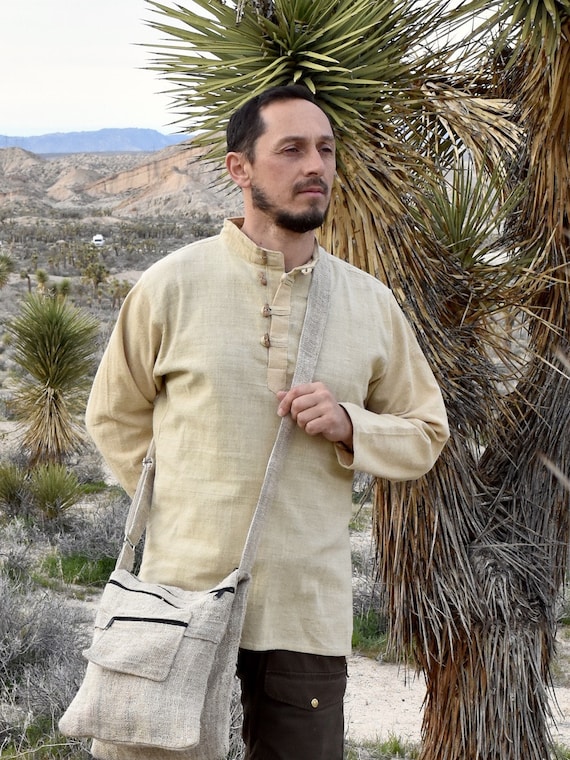Recommended Reasons On Choosing Bamboo Clothing
Wiki Article
Why Is Hemp More Biodegradable And Durable And Renewable Than Cotton For Example?
Hemp is more biodegradable than cotton, and is also thought to be robust. This is due to the inherent properties of hemp and how it is grown. Here's why- Biodegradability-
Natural FiberNatural Fiber Hemp is a plant that naturally produces fiber and its fibers can be biodegradable. Clothing and textiles made from hemp decompose in time. This means that they can be returned to nature without leaving any waste. This is in contrast with synthetic fibres such as polyamide, which can decompose over hundreds of decades.
Hemp textiles are generally free from synthetic additives, or treatments that block biodegradability. The textiles made of cotton can be treated with synthetic chemical additives such as certain finishings or dyes which slow biodegradation.
Durability-
Hemp is known for its strength and durability. Hemp fabrics, clothing and other products are more durable than cotton. Hemp clothing is durable and can be washed more times before they show signs of wear.
Hemp fabrics tend to be less susceptible to pilling, which is the formation of tiny fuzzy balls on the surface of the fabric. This attribute helps to prolong their life and overall quality.
Regenerative Agriculture-
Soil Health - Hemp cultivation is regenerative when done sustainably. Hemp cultivation that is sustainable has a deep-rooted system that can help prevent soil compaction. This root system also helps to prevent erosion. This regenerative aspect can leave the land in better shape for future crops.
Low environmental impact Sustainable hemp cultivation methods generally use low levels of pesticides and herbicides to limit environmental harm. Contrary to conventional cotton farming, its use of synthetic chemicals could result in soil degradation and water pollution.
Water Efficiency-
Hemp generally requires less cotton to develop. Its drought-resistant characteristics mean that it is able to thrive even with little irrigation, or even in conditions that are rain-fed. It is a more efficient use of water, particularly in regions with limited water resources.
Hemp can be incorporated into crop rotations that improve soil health by reducing the possibility of soil diseases and depletion. In the cotton industry the practice of rotation is much less common.
Hemp's versatility allows it to be used for many different applications, including clothing, textiles paper, and other building materials. Hemp's versatility means that it is able to support a variety of industries that employ sustainable, regenerative practices.
It's crucial to understand that hemp is a great product, however it could also be unsustainable, depending on your processing and farming methods. Choosing hemp products that are made using ethical and sustainable practices can maximize its environmental advantages. Organic cotton is an effective way to lessen the impact on the environment of cotton that is conventionally grown. See the recommended hemp clothes for more advice including hemp dress, hemp clothing wholesale, afends jesse dress, hemp textiles, hemp clothing, hemp t shirt mens, hemp t shirts wholesale, 100 hemp shirt, hemp tee shirts, mens hemp trousers and more.

What Are The Functional And Technical Benefits Of Hemp Clothing Versus Conventional Fibres?
Hemp clothing is an eco-friendly alternative that provides many functional and technical advantages over conventional fibers. Hemp clothing has numerous advantages that make it an excellent green and high-performance alternative.
Hemp fibers have a high capacity for wicking and are extremely air-tight, which means that hemp clothing is breathable and comfortable under any conditions. They help to wick away water, which keeps the wearer cool and dry in hot weather.
Temperature Regulation
Hemp clothing is extremely thermoregulatory. It can keep warm during cool temperatures by keeping body heat in close proximity and helps to remain cool during hot temperatures when moisture and heat are allowed to go away. The natural thermoregulation process can decrease the frequency of changing clothes.
Durability-
Hemp fibers have earned a reputation for being durable. Clothing made from hemp is more durable and resilient to wear than clothing made of other fibers, such as cotton. Hemp clothes are sturdy, which means that they are able to last longer and reduce the requirement for replacements and therefore, their impact on the environment.
UV Protection-
Hemp fibers protect the skin from harmful UV radiations. This is particularly beneficial for outdoor sports and activities.
Biodegradability:
Hemp clothes degrade naturally over time. The impact on the environment of textiles is diminished by this characteristic, in contrast to synthetic fibers which can remain in landfills for many years.
Low Environmental Impact
Hemp production typically requires lesser synthetic herbicides or pesticides when compared to cotton. It also requires less water, making it a greener choice. The environmental benefits of hemp grown organically are even more pronounced.
Carbon Sequestration
Hemp plants are able to absorb carbon dioxide out of the atmosphere in the course of their growth. The hemp plant is able to act as a carbon sink and reduce greenhouse gas emissions.
Sustainable agriculture and crop rotation-
Hemp is easily integrated into crop rotation systems to enhance overall soil health. It also lowers the chance of soil depletion or disease accumulation. This sustainable farming method can help reduce environmental impacts.
Versatility:
Hemp fibers are a versatile material that blends with organic cotton recycled polyester, or other materials to create environmentally friendly fabrics. This versatility allows for the development of new, sustainable textile products.
Low Toxicity
Hemp fibers are naturally low in toxicity. They do not require a lot of chemical processing during manufacturing, thus reducing the environmental impacts of the production of textiles.
The overall durability of clothing is determined by various factors, including dyeing, transportation and ethical methods of labor. To help consumers choose environmentally sustainable options, they should seek out clothing brands that focus on sustainable manufacturing, transparency, and ethical practices. Follow the recommended click this about hemp clothes for website tips including patagonia work pants hemp, hemp jeans, patagonia volley shorts, patagonia ranch jacket, mens hemp clothing, hemp golf shirts, american made hemp clothing, hemp pants mens, patagonia hemp jacket, hemp t shirts wholesale and more.

What Are Some Of The Benefits That Bamboo Clothing Has For The Environment And Comfort?
Bamboo clothing offers several advantages when it comes to both comfort and the environment. Comfort-
Softness- Bamboo fabric is known for its extraordinary softness. It's smooth and silky to touch, making it comfortable on the skin. Bamboo clothing is a favorite for its luxurious softness, making it a great option for activewear, loungewear and intimate apparel.
Breathability- Bamboo fibers are naturally breathable and moisture-wicking. The micro-gaps allow air to circulate and keep you cool. The properties that wick moisture away from the fabric help to remove sweat from the skin. This reduces the sensation that your garment is damp.
Bamboo clothing is a great thermoregulating characteristics. Bamboo clothing keeps you warm during cooler temperatures, by trapping warm air close to your body. Conversely, it can help keep you cool during hot weather by allowing excess water and heat to evaporate. Bamboo can adjust to a variety of temperatures, it's suitable for any season.
Hypoallergenic- Bamboo fabric is hypoallergenic and soft on sensitive skin. It is less prone to irritate or cause allergic reactions.
Bamboo fibers naturally have antimicrobial properties and will stop the development of bacteria that cause odor. This attribute contributes to the breathability and comfort of bamboo clothing even during physical activity.
Environment-
Sustainability- Bamboo is a highly sustainable and renewable resource. Bamboo is among the fastest-growing plants on the planet. It is able to grow with only a little water usage and doesn't need any pesticides. Bamboo is harvested and not killed it, because its root system regenerates.
Bamboo has a low water consumption. It can survive with little water, and it can also grow without rainwater.
Biodegradability - Bamboo clothing breaks down naturally after a period of time, even before it is thrown away. This reduces the amount in landfills of nonbiodegradable materials.
Carbon Sequestration - Bamboo plants are able to sequester CO2 from air during rapid expansion. Bamboo can serve as a carbon sink in order to aid in reducing climate change.
Chemical Reduction Bamboo fabric is manufactured with fewer chemical treatments than other fabrics. This minimizes the environmental impact of textile production.
Closed-Loop Production- Some bamboo fabric production processes use closed loop systems that recycle and reuse water as well as chemicals, while minimizing the amount of waste and pollution.
Be aware that the impact on the environment for bamboo clothing is different based on whether or not it's made from sustainable and ethically managed bamboo forest. Bamboo clothing that is produced using sustainable practices will bring the most environmental benefits. Take a look at the most popular bamboo clothing for blog recommendations including bamboo sports clothing, bamboo onesies, bamboo shorts, bamboo hoodie women's, rayon from bamboo fabric, bamboo fitness clothing, jacket bamboo, bamboo mens shirts, onno bamboo shirts, bamboo sweatpants and more.
